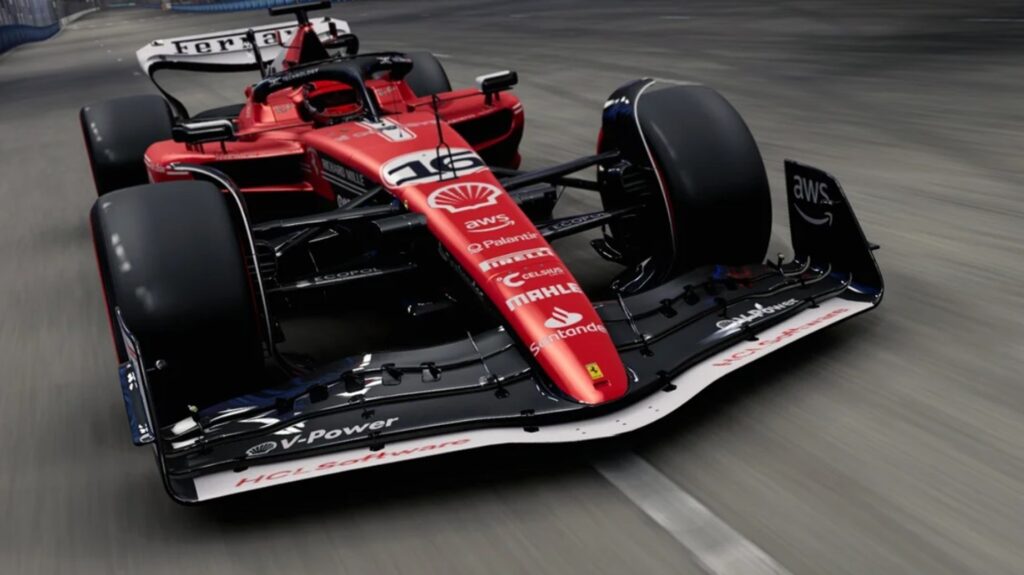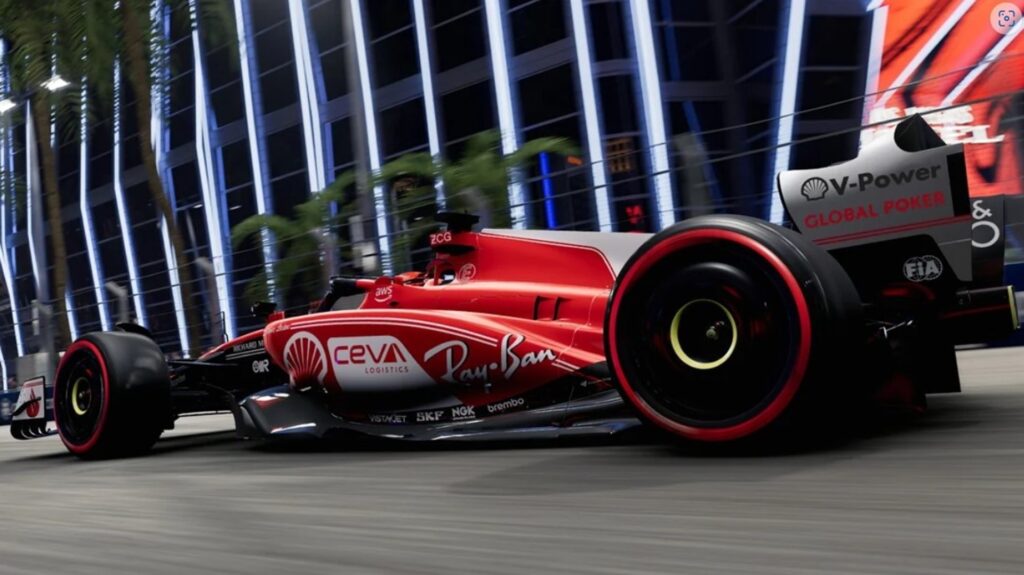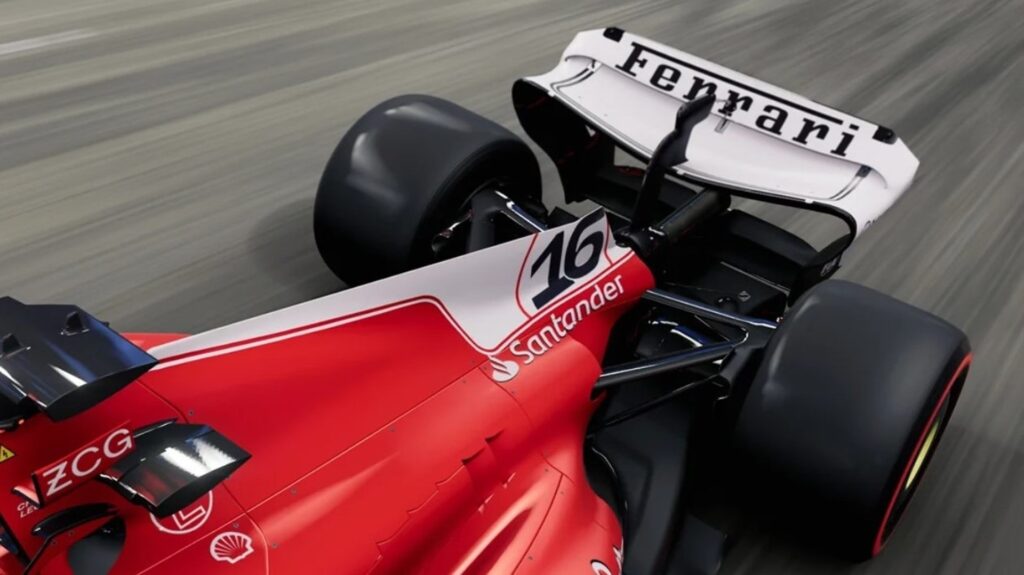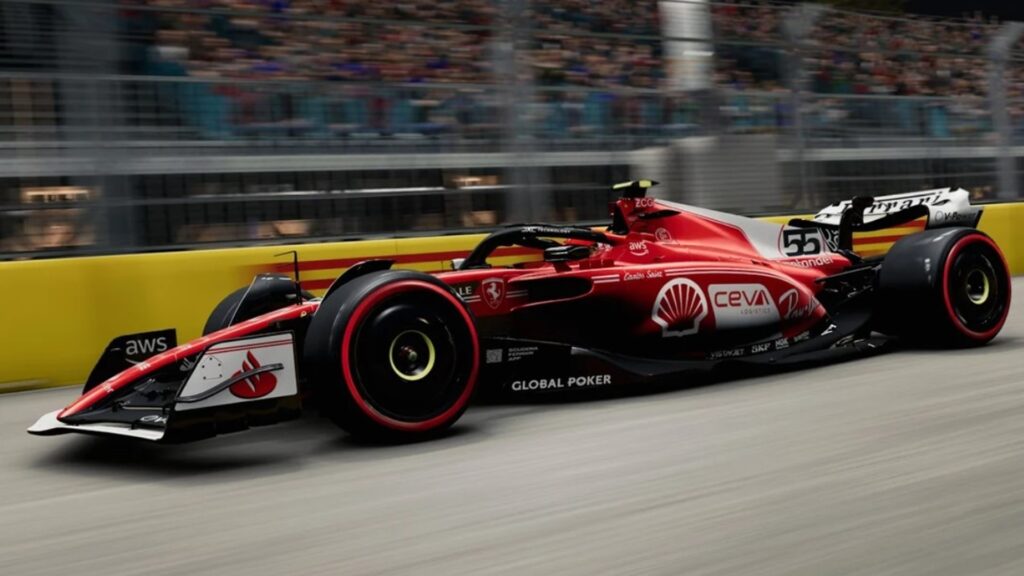Formula 1’s Las Vegas Grand Prix is shaping up to be one of the sport’s biggest events in recent memory, albeit a controversial one. Regardless of differing views, F1 cars racing down city streets bathed in the light of the Vegas strip is sure to be quite the spectacle, and as such, Ferrari decided they needed to arrive in style by dressing their SF-23 up in a special livery.
The special paint job is meant to pay tribute to Ferrari’s American successes in their heyday. They specifically reference Mario Andretti’s 1971 312 B and Gilles Villeneuve’s 1978 312 T4, two cars which serve as the inspiration behind the design of this new livery.
Read More: Las Vegas Casino Workers Approve Potential Strike Days Ahead Of F1 Grand Prix

Elements of the SF-23 that were originally black are now a bright white, such as the sharkfin graphic, the leading edge and endplates of the front wing, many of the sponsor logos, and the entirety of the rear wing. The nose cone, side pods, sharkfin, and rear wing have also been treated to a handful of retro pinstriping touches, which pair nicely with the vintage-style driver numbers Ferrari have been using on their car this year. While the gorgeous design is meant to evoke the ’70s, we can’t help but also seeing a bit of the red-and-white Ferraris of the early 2000s, not that that’s a bad thing.
In addition to the car, drivers Charles Leclers and Carlos Sainz will also be wearing special race suits and helmets that match the new livery. With all these changes, Ferrari is sure to be well-loved under the Vegas lights, but the race itself has attracted some negative attention.
See Also: What It Took To Create The New Las Vegas Formula 1 Track

High-Priced Tickets and Restricted Views
For one, exorbitant ticket prices have left many fans feeling alienated, almost as though the race was more of a cash grab designed to cater to the wealthy rather than a spectacle built for motorsports enthusiasts. In conjunction with that, F1 has reportedly gone out of their way to block viewpoints of the circuit that aren’t paid seating areas, as well as charge businesses with a view of the circuit for the privilege of not being blocked. These actions somewhat defeat the purpose of holding a race in a city environment, as part of the appeal comes from the fact that onlookers can view the race too.
And aside from the issues with the race’s organization, locals have gone on record complaining about the extreme inconveniences the track’s construction has caused to their day-to-day lives and the community as a whole. That’s not even to mention the conditions faced by the workers tasked with constructing the circuit and its accompanying facilities.
Related: Ferrari 296 Challenge Is Ready For The Track With 690 HP and Wild Aero

This isn’t the first time F1 has had issues in Las Vegas, though. Ardent Formula 1 fans will remember the Caesars Palace Grand Prix of the 1980s, and needless to say it had its fair share of issues as well. Aside from the flat, repetitive E-shaped layout, the track was literally built in a parking lot, more specifically, the parking lot of the Caesars Palace casino. Because of that, it was also very short. At 3.650 km (2.268 mi), the temporary circuit was just 313 meters (1,027 ft) longer than the infamously short Monaco street circuit. Additionally, because the race was hosted in the daytime in the hot Nevada desert, temperatures became a serious issue, leading to many drivers suffering from heat exhaustion if their car hadn’t already overheated first.
With a longer, more purpose-built layout, a more desirable location in the city, and a nighttime setting to beat the heat, the new Las Vegas GP aims to right its predecessor’s wrongs, but until the cars first take to the track for FP1 on November 16, we won’t know for certain if it’ll accomplish that goal.



